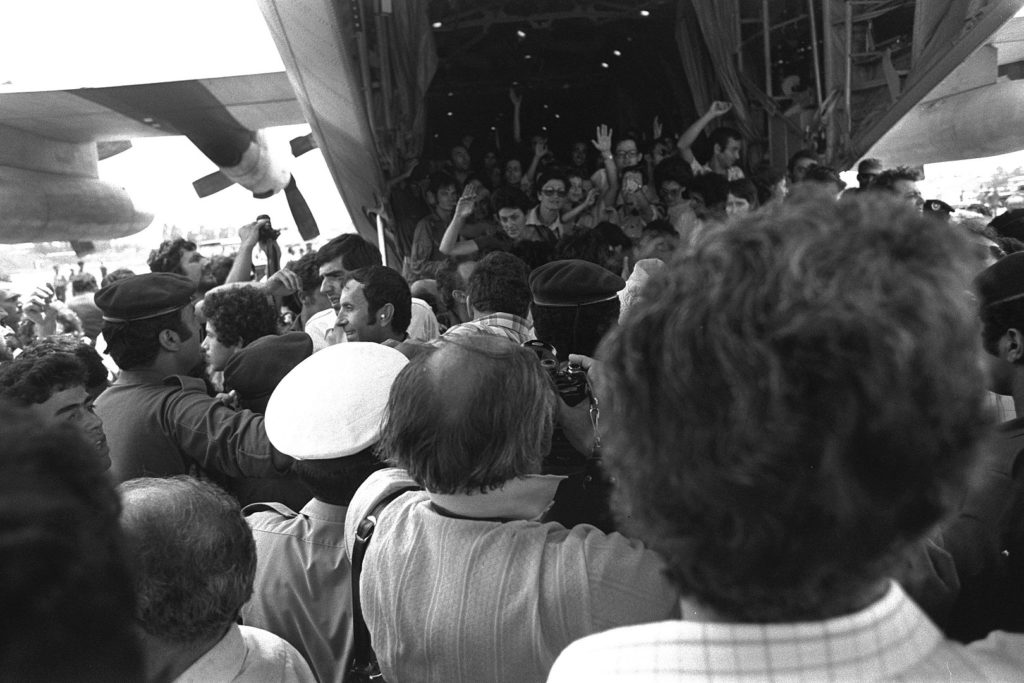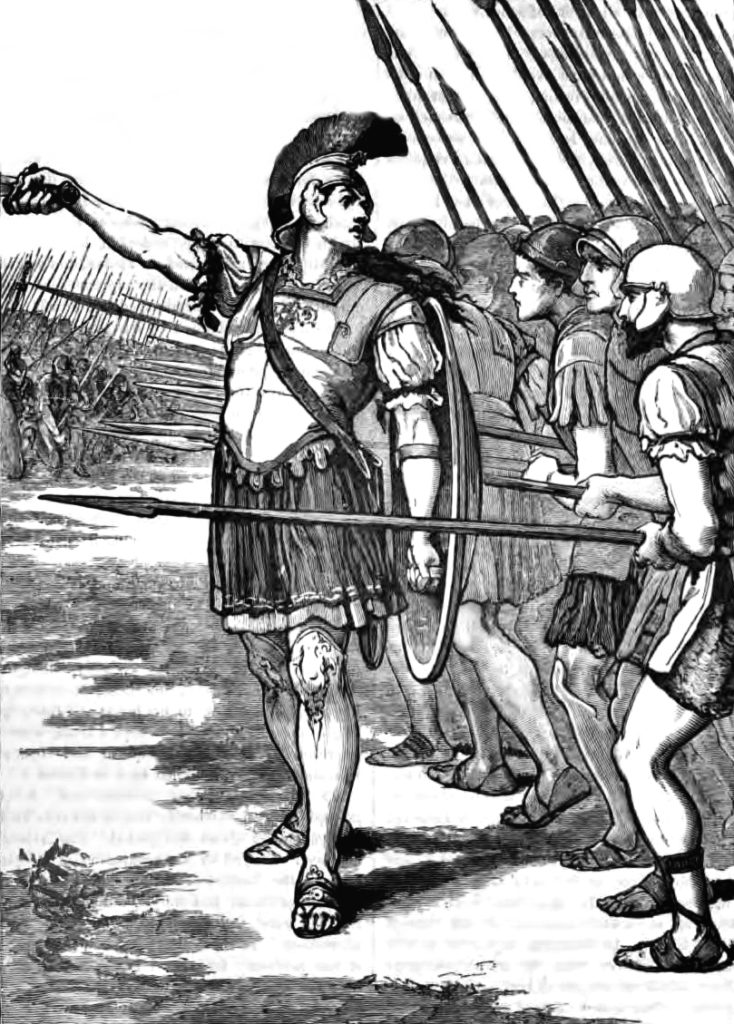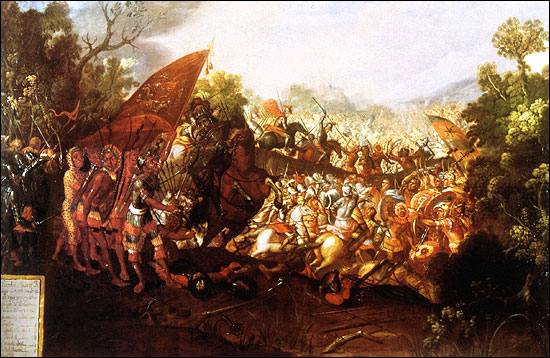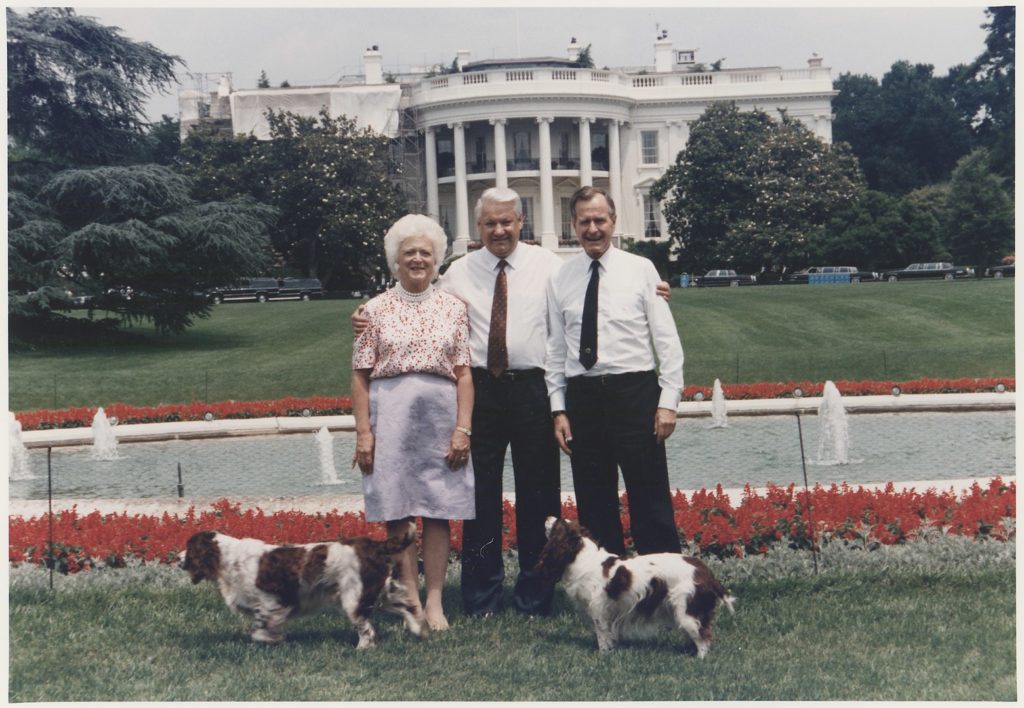This Week in History recalls memorable and decisive events and personalities of the past.
4th July 1976 – Israeli commandos raid Entebbe airport in Uganda, rescuing all but four of the passengers and crew of an Air France jetliner seized by Palestinian terrorists

On 27 June 1976, an Air France plane with 248 passengers on board was hijacked at Uganda’s Entebbe airport. Two of the four hijackers were members of the Popular Front for the Liberation of Palestine, and the other two, members of the German Revolutionary Cells.
The hijacking had the blessing of Ugandan dictator Idi Amin, and its stated goal was to free 53 prisoners, most of whom were held in Israel.
In the days leading up to 4 July, the hijackers released the 148 non-Israeli hostages from the plane, and herded the remaining 94 Israeli passengers and 12 Air France crew into the transit hall of a disused airport terminal.
As the days passed, the hijackers threatened to kill the hostages. With political options for securing their release diminishing, the Israeli intelligence service, Mossad, began planning a rescue operation.
With some covert assistance from the Kenyan government, the Israelis hatched a plan to fly a group of commandos to the airport, extract the hostages and escape on the same planes. They expected to have to fight off the Ugandan army and air force in the course of the mission. The raid was to be led by Yonatan Netanyahu, the older brother of current Israeli Prime Minister Benjamin Netanyahu.
Setting out in four C-130 transport planes, and flying low over the Red Sea to avoid the radar of hostile Arab nations, the Israelis landed in Kenya to refuel and then flew on to Uganda, landing at Entebbe airport at 11pm on 3 July. The commandos brought with them in one of the planes a black Mercedes, which they hoped the Ugandan guards would mistake for Idi Amin’s car. In fact, the dictator had recently changed to a white Mercedes, and the appearance of the black model caused Ugandan guards posted near the hostages to stop the car.
A firefight followed, prompting the commandos to immediately break into the airport terminal where the hostages were being held. In the ensuing chaos, two of the hostages were accidently killed by the commandos and one was shot by a hijacker. However, all of the hijackers were killed, and the rest of the hostages were evacuated.
While this was under way, armoured personnel carriers brought by the commandos on the transport planes were deployed to destroy Ugandan Air Force fighter jets stationed at the airport and prevent them from being scrambled to chase after fleeing Israeli planes.
As the hostages were being herded aboard the transport that would return them to Israel, Ugandan army soldiers engaged the Israelis. In the ensuing fight, Israeli commander Yonatan Netanyahu was killed, along with between 33 and 45 Ugandan troops. Four Israeli commandos were injured.
The whole operation was completed within 53 minutes, with the Israelis succeeding in rescuing all but four of the hostages, and destroying a quarter of the Ugandan Air Force.
Idi Amin was furious when he heard the news and immediately sent troops to a hospital near the airport where the only hostage left behind, 74-year-old Dora Bloch, was being treated after nearly choking on a chicken bone. The soldiers proceeded to kill her and several of the nurses and doctors who had tried to intervene to stop them.
Amin also sought revenge on Kenyans living in Uganda for Kenya’s part in the operation; 245 Kenyans were massacred in retaliation.
Three years later, Amin would be deposed when a Tanzanian army invaded and overthrew him after he attempted to annex a border region between the two countries.
5th July 1937 – Spam, the luncheon meat, is introduced into the market by the Hormel Foods Corporation

Spam, that miracle food which for many in the English-speaking world defined their culinary experience of the Second World War, consisted of pork, salt, water, modified potato starch, sugar, and sodium nitrite, precooked and sealed in a can. It quickly gained popularity across the English-speaking world.
Due to rationing, it was the meatiest product in the diet of most British citizens and it was also often supplied to troops in the British and American armies. Its introduction to the Pacific Islands during the war saw it immediately absorbed into many local diets and it has become a staple of dishes in the Pacific region.
Such was its cultural impact that its prevalence was made fun of in a famous skit by the British comedy group, Monty Python. Thanks to their skit, ‘spam’ became a synonym for the unwanted emails and other communications that are the bane of the internet age.
6th July 371 BC – The Battle of Leuctra

The Battle of Leuctra was fought between the soldiers of the Boetian League, led by the Greek city state of Thebes, and the old dominant city state and hegemonic power of Greece, Sparta.
Following the defeat of the city of Athens in the Peloponnesian War by Sparta and its allies, Sparta remained the most powerful city in the Greek world. Famed for its legendary warriors and unique dual monarchy, the Spartans were deeply conservative and sought to oppose both the Greek cities which appointed kings (called Tyrants) and those which were democracies, such as Athens. The Spartans preferred to replace these with oligarchies.
In the year 371 BC, the Thebans established their democracy a few years after their defeat by Sparata, and sought to rebuild an alliance of Greek cities in central Greece called the Boetian League.
The Spartans viewed this as another Theban challenge to their rule, and so sent an army to teach them that Sparta could not be defied.
In July 371 BC, the two armies met at Leuctra, a battle in which the Thebans, exploiting a range of innovative tactics and the skilful use of their cavalry, ultimately routed the Spartan army.
The defeat of Sparta came as a shock to the Greek world, shattering the perception of Spartan military invincibility, and leading to the collapse of Sparta’s hegemony over rival Greek cities.
Thebes would become the most powerful city in Greece – but their rule would not last long; a Macedonian prince called Philip, who had been in Thebes at the time of the city’s battle with Sparta and had made a study of the Thebans’ innovative tactics, would soon make his own country the predominant military power of the Mediterranean world.
7th July 1520 – Spanish conquistadores defeat a larger Aztec army at the Battle of Otumba

Following the flight from Tenochtitlan by the Spanish and their allies covered in last week’s This Week in History, the exhausted Spanish made for the coast. Six days into their journey the surviving Spaniards and a small group of native allies who had remained with them encountered a vast Aztec army on the plain of Otumba.
The huge Aztec army, numbering around 20 000, was confident and regarded the Spanish army of about 1 300 Spaniards and 1 000 Tlaxcala allies as effectively already defeated. They were looking primarily to capture the defeated army for use in human sacrifice, and each warrior, as was common in Aztec military affairs, sought to enhance his own prestige by taking as many sacrificial captives as possible.
The Aztecs failed to account for the advantages retained by the Spanish, namely their steel armour, horses and superior organisation.
The Spanish commander Hernán Cortés directed his cavalry to target the richly dressed commanders of the Aztecs and their flag-bearers, seeking to panic the Aztec fighters by killing their leaders.
The Aztecs, never having encountered horses before, much less fearsome Spanish warriors mounted on them, scattered as the cavalry charged. This allowed the Spanish troops to break up advancing Aztec groups, shatter them, kill their commanders and wheel around to regain the main body of Spanish and Tlaxcala troops.
When the Spanish managed to kill the chief Aztec commander, Matlatzincatl, and his flag-bearer, the shocked and confused Aztecs, horrified that their opponents were not the easy pickings they had imagined, fled the field, allowing the Spanish and their allies to escape to friendly territory.
The stunning defeat, which shattered the decades’ long reputation of the Aztecs as the dominant power in the region, and the subsequent outbreak of smallpox among the Aztecs, (a disease unknown in the Americas at the time) weakened the Aztec Empire and, over the months that followed, Cortés slowly destroyed Aztec power in the region, gathering more allies.
Eventually he laid siege to the Aztec capital at Tenochtitlan by carrying boats overland and taking control of the lake around the city. After a long and brutal siege, Aztec power was broken, and Mexico would begin to fall under Spanish control.
Cortés would be richly rewarded for his efforts by the Spanish king, and after the subsequent defeat of the Aztecs, would lead many more expeditions in the Americas. He eventually over-stretched himself financially with his numerous military adventures and died massively indebted in Spain at the age of 62.
10th July 1991 – Boris Yeltsin takes office as the first elected president of Russia

A controversial figure today in Russia and the West, Boris Yeltsin is remembered both as a liberator of Russia and as an incompetent alcoholic who destroyed Russia’s economy.
Born in 1931 in the Sverdlovsk region of the Urals, Yeltsin grew up to study at Ural State Technical University and was assigned a job in construction as an engineer by the Soviet government.
In 1960, he joined the Communist Party of the Soviet Union, for reasons that are disputed; he has both claimed he joined the party out of sincere belief and also that it was purely to enable him to get ahead in Soviet society.
Over the next few years he was promoted within the party, in 1976 being interviewed personally by Soviet Premier Leonid Brezhnev for the post of First Secretary of the Party Committee in Sverdlovsk Oblast.
He would later come to serve in the Politburo under the last Soviet leader, Mikhail Gorbachev, a position he resigned from in 1987 over his discontent with the slow pace of reform, and after a lecture from one of the hardline members of the Politburo after he, Yeltsin, had allowed some demonstrations to take place in Moscow. This gives him the distinction of being the first member of the Politburo to ever willingly resign.
Yeltsin would emerge as a leader of the radical reform faction within the Soviet government. In 1991, he would be elected president of Russia (at the time a constituent republic of the Union of Soviet Socialist Republics, or USSR) in the first democratic elections in the country’s history, defeating Gorbachev’s preferred candidate.
In August 1991, he famously stopped a coup attempt by hardliners by giving a speech from a tank to troops who had been ordered by the hardliners to stop the continuing reforms and arrest Gorbachev. Later that year, the Soviet Union collapsed and Russia emerged as an independent nation.
In his years as president, Yeltsin oversaw the poorly managed privatisation of the Russian state-owned economy that resulted in economic collapse, as well as a gruesome war in Chechnya, which attempted to break away from Russia.
After using the army to force the legislature to dissolve, thereby sparking a constitutional crisis, surviving multiple impeachment attempts, and in poor health from his drinking and a heart condition, Yeltsin resigned from office on 31 December 1999. By some estimates, his approval rating on leaving office was as low as 2%.
As he took his leave, Yeltsin did however manage to appoint a successor president, a man named Vladimir Putin.
If you like what you have just read, subscribe to the Daily Friend

